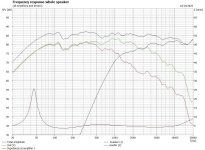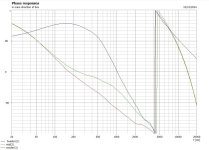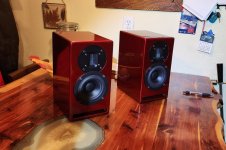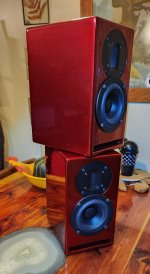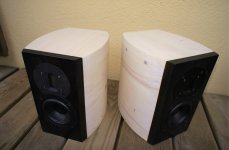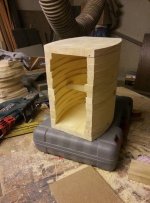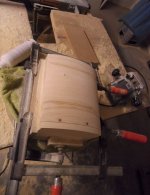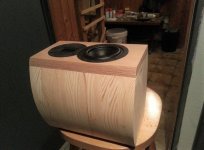Oh thats part of the fun of this hobby. Figuring out how to hide mistakes so they just look part of the design. I too made a ton of mistakes on my build.I made many mistakes
Your design looks damn nice. I love the unconventional shape.
Not what you need to hear now Byron, but there are people around here with router jigs for that frame.
🤣🤣🤣Not what you need to hear now Byron, but there are people around here with router jigs for that frame.
No, that is a very specific edge reflector that was designed to direct some of the top woofer down ward. Why must I think for you.That is a fix for a mistake I made. I made many mistakes. That mistake was: I somehow cut all the baffle holes 3/4 inch too high! I didn't realize the mistake until I found that I couldn't insert the top woofer, because the speaker top was in the way. So I cut out a notch in the top and covered it with leftover wood.

My build. Curved Sides are made from 2 layers of 3/8" birch bending ply. When sandwiched together with half a gallon of Tightbond 3, the curve is extremely strong and rigid.

My first pass at attaching the first layer of the 3/8" birch bending ply left some big gaps. I wanted to throw the whole thing on the firepit, but once I calmed down, it was totally saveable with a bit of modification.
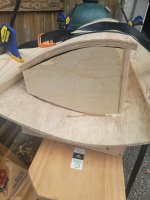
Filled them with epoxy. And epoxyed a 1/4" plywood panel to the top. Oh. And I discovered the arm muscle building joys of working with a japaneses pull saw for flush cuts.
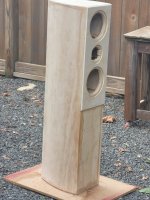

My first pass at attaching the first layer of the 3/8" birch bending ply left some big gaps. I wanted to throw the whole thing on the firepit, but once I calmed down, it was totally saveable with a bit of modification.

Filled them with epoxy. And epoxyed a 1/4" plywood panel to the top. Oh. And I discovered the arm muscle building joys of working with a japaneses pull saw for flush cuts.

Last edited by a moderator:
Yep. Definitely worth it. I tested it vs several other variations, and kept coming back to it. I was inspired by an old Dynaudio speaker crossover that had 2 of them. I modeled 1 and it worked perfectly to draw in my 2nd order tweeter crossover to be perfectly in phase with the Satori midbass.Wow, a ladder delay! Went there huh?! Worth it?
Before I used the ladder delay. It was nice but a bit congested in yhe upper freq. After I tried it, it just sounded right.
Also. i tried some combos where I had a 1 to 2 ohm resistor in series with the shunt 0.4mH coil to change the shape of the tweeter rolloff at low freq. In every case I hated it.
Thanks, I think that's the best I've ever done with a spray can.
maxlorenz said:
I AM constantly upgrading my analog sources for my Big System n°2, which is built to move my Tannoy Autograph clones with Beyma coaxials.
Thanks for your interest, dear.prairieboy said: Out of curiosity, which Beyma coaxial are you using? I haven't seen an Otari in years!
The transducers are Beyma KX15. Good speakers. I have also the
P.Audio BM-15CX38 Coaxials but I have been too lazy to swap them, because it is a lot of work....
The R2R are coming back and there are plenty of offers. OTARI and others as you may know.Much Love to All,
M.
Wow, a ladder delay! Went there huh?! Worth it?
Gotta say when I looked at that crossover schematic the letters F, W, T came to mind and not in that order.
S'poze I have some more reading to do.
Hmm... "ladder delay" ...
Somebody better grab that pig before it dirties up your house
Here is my latest version of my horn rig. Plan was to use the JMLC Iwata 600 for a tweeter horn but JMLC-1000 sounds so much nicer. I just kept them all, even if the difference between the 600 horn and the 300 horn is negligable, using the same same driver (minus the throat adapter). But if I eventually move to a larger JMLC Iwata 300 horn then I will be happy that I kept the 600 horn in the design, because the sound above 1500 Hz is sweeter than a very large horn.
Seriously good looking!Decided to finish my Speedsters, it's only been a year.
View attachment 1367580
View attachment 1367583
View attachment 1367589
- Home
- Loudspeakers
- Multi-Way
- System Pictures & Description

